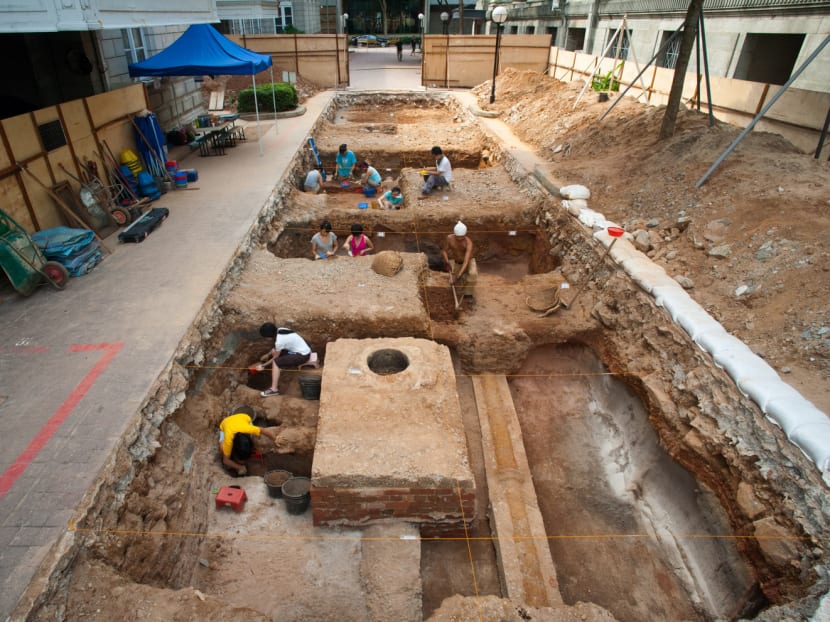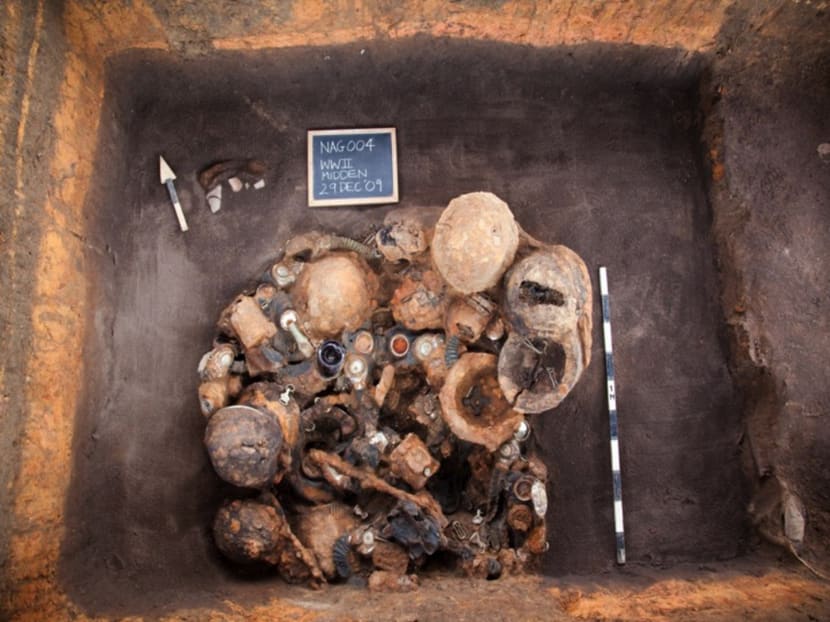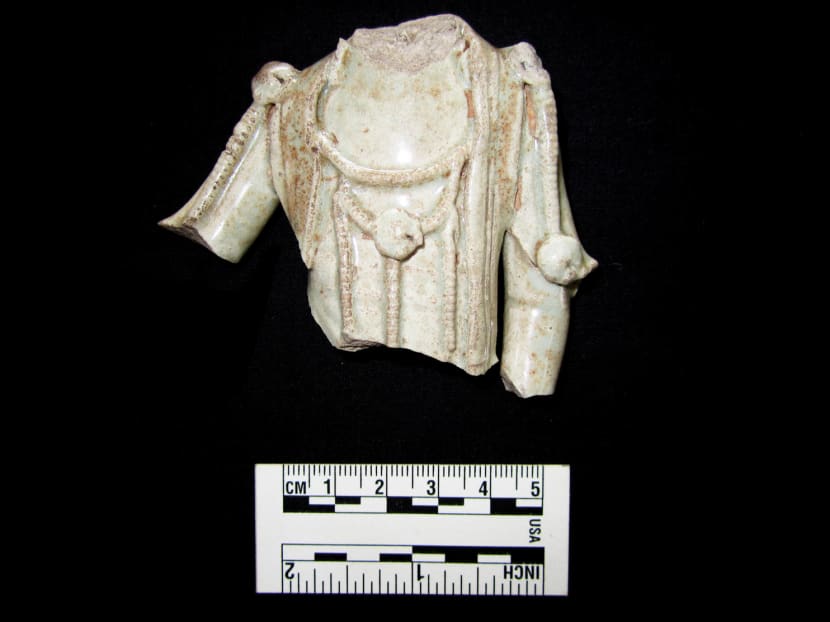Unique historical artefacts recovered at National Gallery site
SINGAPORE — When the artefacts dug up in recent years at the National Gallery Singapore, Victoria Concert Hall and Theatre as well as Empress Place are processed and analysed, Singapore will probably be the best-studied pre-modern urban and port settlement in Southeast Asia, said the archaeologist who has led the excavations.



SINGAPORE — When the artefacts dug up in recent years at the National Gallery Singapore, Victoria Concert Hall and Theatre as well as Empress Place are processed and analysed, Singapore will probably be the best-studied pre-modern urban and port settlement in Southeast Asia, said the archaeologist who has led the excavations.
And the findings will serve as a comparative reference for others studying the region, said Mr Lim Chen Sian, associate fellow of the Nalanda-Sriwijaya Centre Archaeology Unit at the Iseas-Yusof Ishak Institute.
Large-scale rescue excavations at the National Gallery Singapore took place in 2010, while a limited rescue excavation at nearby Victoria Concert Hall and Theatre was done in 2011. The Empress Place archaeological excavation — the largest in Singapore — took place in 2015.
Post-excavation processes and analyses are more tedious than the excavations. With sufficient resources, the rule of thumb is, one day of excavations is about 21 days’ worth of processing, said Mr Lim.
“Once all the post-excavation processing is done, the real work to research and interpret the finds begins,” he said. The Nalanda-Sriwijaya Centre Archaeology Unit aims to complete the processing of artefacts from the sites it dug by 2023, pending available resources, he added.
The unit released a preliminary report this month on the archaeological investigations at the National Gallery Singapore. The site was the former Supreme Court and City Hall and was due to undergo extensive demolition and construction below-ground to be redeveloped.
Once the official residency of Lieutenant-Colonel William Farquhar — Singapore’s first Resident and Military Commandant — the site had the potential to hold archaeological remains from the Temasek (1300 to 1600s) and early colonial periods, as it had undergone little change from 1939.
Significant pockets of Temasek artefacts remained intact beneath the compound, although the excavations made up only 12 per cent of the car park area. Some artefacts recovered for the first time in Singapore included a fragment of crumpled gold foil, religious iconography of a Bodhisattva and medieval etched glass. An extensive World War II rubbish pit with items such as steel helmets, rubber gas masks and a boot was also uncovered.
“These provide an exceptional glimpse into the pre-colonial and colonial past for which there is little or no record in historical texts,” Mr Lim noted in the report.
Elaborating on the crumpled gold foil, Bodhisattva iconography and medieval glass, he told TODAY via email: “These unique items present a deeper insight into the extent and variability of trade and consumption in ancient Singapore/Temasek.” The Bodhisattva icon presents “for the first time, an idea of the possible belief systems of the population from the early pre-modern period, which we know nothing about”. Mr Lim added: “While we’re not clear if the population, or for this matter, the owner of the artefact practised Buddhism, we now know that it was certainly one of the available ideology in Temasek.”
The gold foil suggests belief practices common in East Java. On a secular dimension, the artefacts represent the ability of the people then to acquire and consume the objects.
They potentially demonstrate different social strata, as well as the extent of the merchant trading network between Temasek and the items’ producers, said Mr Lim. As for the WWII pit, he said that while the war’s major events are known, smaller episodes are often forgotten or not recorded.
The pit could be an attempt by Air Raid Protection or military personnel to stop military material from falling into the enemy’s hands during or after the fall of Singapore, he said.
During the Temasek period, the National Gallery Singapore site was likely a residential area, as the density of materials recovered was “far lower and more spaced out” than the Victoria Concert Hall and Empress Place sites.
“We’re currently able to broadly postulate that the Empress Place lawn and riverbank area was a heavy commercial, possibly market area with lots of traffic; while the rear of Victoria Concert Hall may still be part of the commercial riverfront but perhaps a quieter alley,” said Mr Lim.
“Lots of wonderful stuff” is in store, when post-excavation analysis is completed. Experts will have a nuanced understanding of Temasek as a society and port settlement, and know the types of plants or foodstuffs available then.
Mr Lim said: “We’ll possibly also be able to narrow down the chronology from a very broad 14th to 16th century, and give a more absolute date to the sites.” Neo Chai Chin






